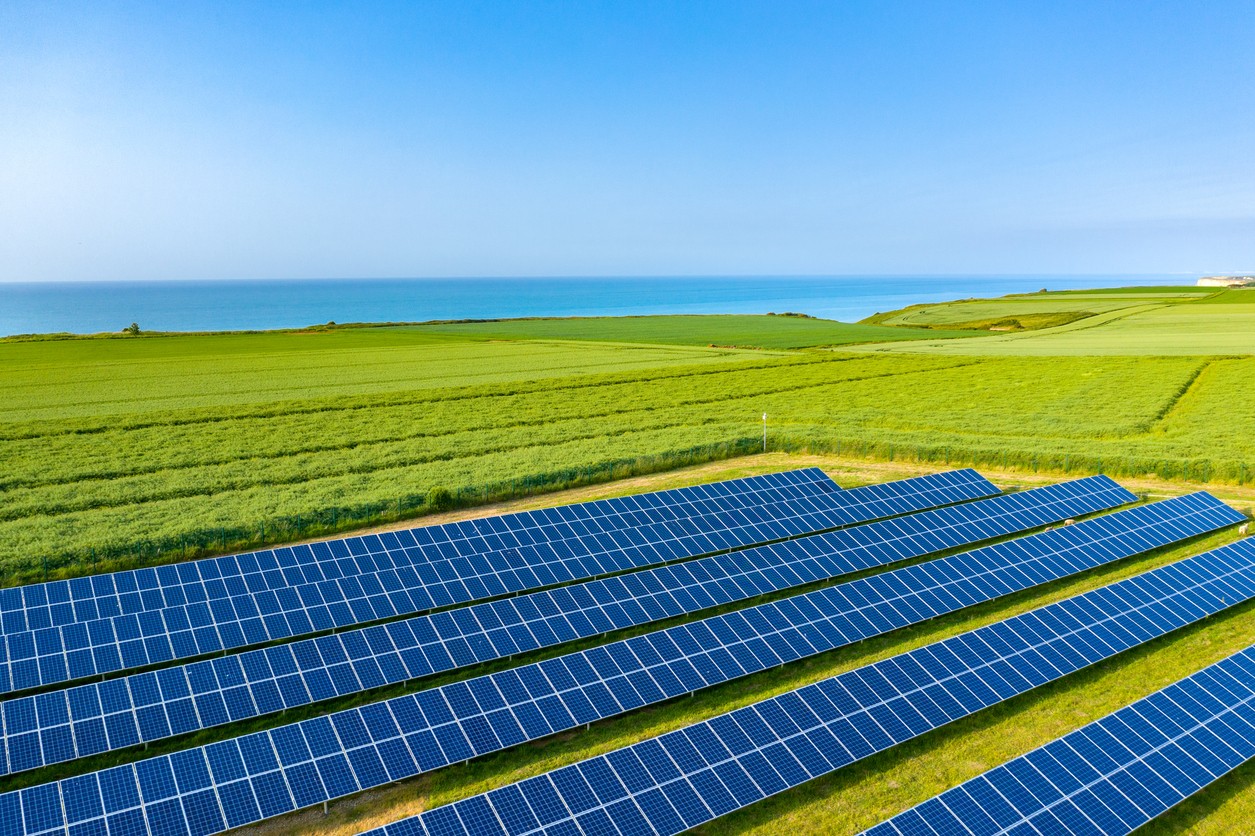
Solar energy has grabbed the attention of landowners and farmers throughout the world. You can harvest solar energy if you have a lot of land where you can use the sun’s energy with the help of solar panels to generate electricity.
So, should you use solar energy on your property if you have a large piece of land? If so, how can you start generating profits from a solar farm in California? What is a solar farm, and how much do they cost? How much profit can you get from a solar farm? Don’t worry, we’ve covered all these things below. So, without further ado, let’s get started.
Solar Farm: Overview
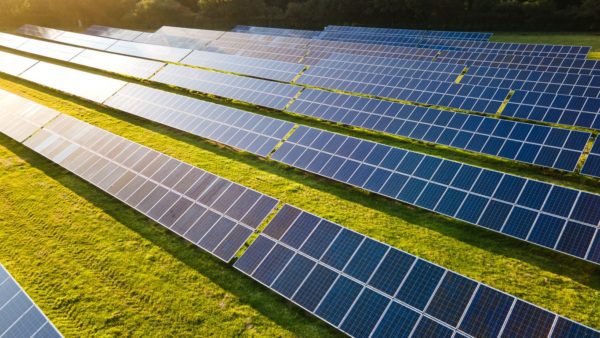
Solar farms are where solar panels are installed on a large scale to harness the sun’s power. These solar panels use photovoltaic panels and other solar energy collection methods to generate electricity.
Other names for solar farms include solar plants, solar parks, and solar power stations. These solar farms supply electricity to consumers, like power plants for fossil fuel. Solar farms differ in several significant ways from rooftop solar systems and commercial solar power systems.
Project developers can lower the cost of the equipment for solar farms by placing bulk orders for solar panels and other necessary equipment. Furthermore, it is essential to position solar power plants in a better area free from obstructions like tree shade.
Decentralized solar farms typically consist of ground-mounted solar panels spread out over wide areas. Solar farms often contribute to the utility’s energy mix by supplying electricity to the electric grid.
Are Solar Farms Similar To Rooftop Solar Panels?
Solar farms are the huge setup of solar panels installed on the ground to utilize solar energy and convert it into electrical energy. Solar farms differ from traditional home solar panels on rooftops and buildings for several reasons.
Solar farms are ground-mounted across large sections of land, unlike solar panels on rooftops or in small spaces. Solar farms can benefit from economies of scale, which allows placing more solar panels across a bigger surface area. Solar farms are installed in open areas where direct sunlight is easily reached.
Factors that Affect the Profit Generated by Solar Farms
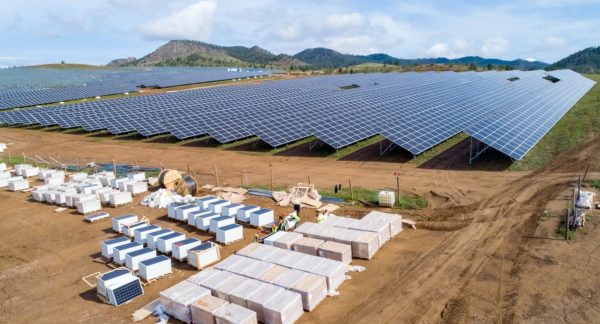
You can estimate the generated profit from solar farms in California after determining certain aspects, such as the area of the land and how much sunlight it gets. These factors significantly affect investment and monetization; we will discuss them below.
1. Amount of Sunlight
As obvious as it may seem, for a solar farm to be profitable, the area must receive a lot of sunlight each year. If there are barriers, it may cause a shadow which is bad news for solar installation.
It can be easily removed even if you have obstacles on your land. You can remove a few plants or trees and some other obstacles that are easily movable.
2. Amount of Land
A developer will only be interested in building a solar farm if a particular number of acres are available. 1kW per 100 square feet is a general estimate of how many solar panels the property can allow and hold.
The solar farm land requirements in California varies depending on the project, and you should also include the extra surrounding space needed for non-panel solar equipment. The minimal requirements for developers are often 10 acres of open land.
3. Quality of Soil
This may seem more of a problem for people engaged in conventional farming than those working on solar energy, but it’s still a significant issue. This could be a deal-breaker if the land is unsteady, challenging to develop, or covered in other debris and impediments.
The cost of clearing the land might make the project unfeasible for the developer. Potential solar farm projects will likely be abandoned if the area can’t be safely developed.
4. Grid Proximity
This is a critical deciding factor for solar developers wanting to lease a solar farm property. It seems unlikely that the project will be able to move forward if the required infrastructure to link the solar farm to the power grid is unavailable.
If your site is already close to the required elements, like the power grid, you will undoubtedly have a higher chance since this type of infrastructure is expensive and challenging to create. As mentioned above, the site should be approximately two miles from a substation and 1,000 feet from three-phase power.
When all of these factors have been considered, and the value of the land has been established, the bargaining phase can begin. The solar developer can draft a leasing agreement and get it reviewed by the property owner.
The monthly rent, the number of acres needed, and the lease period are all addressed in this agreement. Ensure you’re satisfied and aware of every lease detail during this procedure phase.
Benefits of Solar Farms
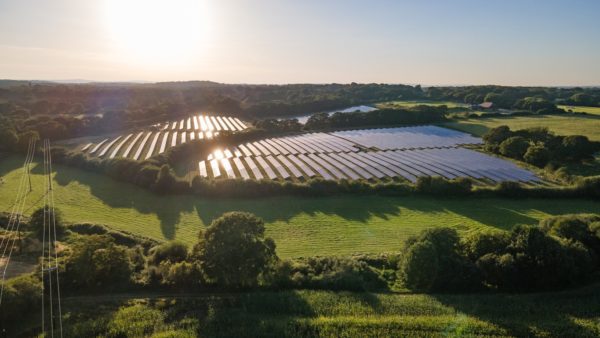
Did you know that the sun can supply the world’s energy requirements for one year with just one hour’s worth of energy? The sun is undeniably a potent energy source; we can only utilize a small portion of it. Harnessing this power by putting up solar panels can significantly impact the globe.
Solar energy has faced criticism for being too expensive or ineffective. Still, it has since been quite advantageous for the environment and the private economy. Here are some of the benefits of Solar farms below.
1. Renewable Source of Energy
Solar energy is an entirely renewable energy source, which is the great advantage of solar panels. It is available every day and can be used everywhere in the world. Unlike some other energy sources, solar energy will never run out.
We will be able to access solar energy for as long as there is a sun, which means that we will have at least 5 billion years until the sun dies, as predicted by experts.
2. Diverse Usage
There are many uses for solar energy. You can produce heat or electricity. Solar energy can be used to distill water in locations with a shortage of clean water, generate electricity in places without access to the electrical grid, and run spacecraft in space. Additionally, solar energy can be included in construction materials.
3. Low Maintenance
In general, solar energy systems don’t need much upkeep. They only need to be kept moderately clean, so a few times a year of cleaning will do the work.
Manufacturers of reliable solar panels typically provide a 20–25 year warranty. Furthermore, there is no wear and tear because there are no moving parts. Since the inverter continuously works to convert solar energy into electricity and heat, it is typically the only component that needs to be replaced after 5–10 years.
Maintenance is required for the cables in addition to the inverter to guarantee that your solar power system operates as efficiently as possible.
4. Guaranteed Income
Solar land leases offer landowners a reliable stream of revenue for the duration of the lease, making them a wise investment. The landowner can benefit from this amount for the long term, usually from 25 to 30 years.
5. Clean Energy
Solar farms produce clean, renewable energy, reducing the need for fossil fuels and other nonrenewable energy sources that hurt the environment and emit harmful gases.
6. Reduced Electricity Bills
Your energy expenses eventually decrease since you can use some of the electricity your solar system has generated to fulfill your demands. Based on the size of the solar system and how much electricity or heat you use, you can save various amounts on your utility bill.
For instance, if your company now uses commercial solar panels, switching to a more extensive system could significantly reduce your energy costs.
7. Benefits the Community
As local governments can use these monies to improve community services and lower tax rates, new tax revenue produced by solar farms would directly benefit local inhabitants.
Solar energy technology has made tremendous strides in recent years. Solar energy is the most economical and environmentally friendly energy source available today.
Solar farms use a dependable, clean energy source. The sun will continue to exist for the foreseeable future. Although, you cannot estimate the same for other energy sources like fossil fuels and coal.
Solar power plants don’t pollute. While some emissions are involved in building a solar farm, they are minimal compared to most other traditional energy sources.
8. Development of Technology
The technology in the solar energy sector is constantly improving, and advancements will accelerate in the following years. Quantum physics and Nanotechnology advancements have the potential to boost solar panel efficiency and double the electrical input of solar power systems.
Turn to Coldwell Solar for Building a Solar Farm
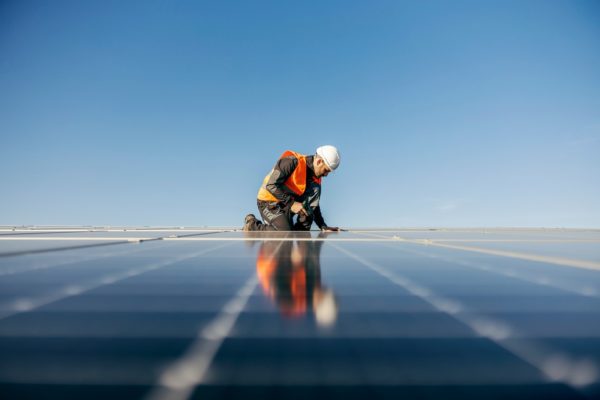
If you are considering a solar farm investment in California, we will tell you it would be the best investment of your life. Solar power is an effective way to get a healthy return on investment and benefit the environment.
By installing a solar farm, you are not only doing your bank account a favor but also contributing to clean energy. Reach out to Coldwell Solar for designing, developing and installing your solar farm in California.

